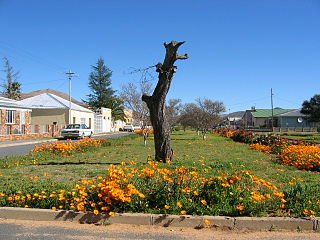
The Rhaetian Railway, abbreviated RhB, is a Swiss transport company that owns the largest network of all private railway operators in Switzerland. Headquartered in Chur, the RhB operates all the railway lines of the Swiss canton of Grisons, except for the line from Sargans to the cantonal capital, Chur, which are operated by Swiss Federal Railways (SBB CFF FFS), as well as the line from Disentis/Mustér to the Oberalp Pass and further on to Andermatt, Uri, which is operated by Matterhorn Gotthard Bahn (MGB). Inaugurated in 1888 and expanded from 1896 onwards in various sections, the RhB network is located almost entirely within Grisons, with one station across the Italian border at Tirano.

The Connaught Tunnel is in southeastern British Columbia, on the Revelstoke–Donald segment. The 5.022-mile (8.082 km) tunnel carries the Canadian Pacific Kansas City (CPKC) main line under Mount Macdonald in the Selkirk Mountains. The tunnel, opened by the Canadian Pacific Railway (CP) in 1916, replaced the previous routing over Rogers Pass.

The Skitube Alpine Railway is an Australian standard gauge electric rack railway in the Kosciuszko National Park in New South Wales. It provides access to the snowfields at Blue Cow Mountain and the Perisher Valley.

A horseshoe curve is a class of climbing curve in a roadbed that reverses turn direction (inflection) twice on either side of a single tight curve that varies through an angle of about 180 degrees or more.

The Raurimu Spiral is a single-track railway spiral, starting with a horseshoe curve, overcoming a 139-metre (456 ft) height difference, in the central North Island of New Zealand, on the North Island Main Trunk railway (NIMT) between Wellington and Auckland. It is a notable feat of civil engineering, having been called an "engineering masterpiece." The Institute of Professional Engineers of New Zealand has designated the spiral as a significant engineering heritage site.
The following lists events that happened during 1876 in South Africa.

A double-track railway usually involves running one track in each direction, compared to a single-track railway where trains in both directions share the same track.

The South African Railways Class GL 4-8-2+2-8-4 of 1929 was an articulated steam locomotive.

The Hex River Mountains make up the second highest mountain range in the Western Cape province of South Africa and are located 120 kilometres north-east of Cape Town. They form part of a large anticline in the Cape Fold Belt mountain system and form a north-east, south-west trending mountain system forming the core of the Cape Syntaxis between the towns of Worcester and De Doorns. They are mostly composed of Table Mountain sandstone with most peaks reaching 2,000 m (6,600 ft) in height or more. The highest mountain is Matroosberg at 2,249 m (7,379 ft), making it the second tallest peak in the province after Seweweekspoort Peak in the Swartberg Mountain Range.

The Lötschberg line is a railway in Switzerland, connecting Spiez in the canton of Bern with Brig in the canton of Valais. It crosses the Bernese Alps, from the Bernese Oberland to Upper Valais, through the Lötschberg Tunnel in the middle of the line. Together with the Simplon Tunnel south of Brig, it constitutes one of the major railways through the Alps and an important north-south axis in Europe. The Lötschberg axis is backed by the lower and longer Lötschberg Base Tunnel, part of the New Railway Links through the Alps project.

The Albula railway line is a single track metre gauge railway line forming part of the core network of the Rhaetian Railway (RhB), in the canton of Graubünden, Switzerland. It links Thusis on the Hinterrhein at 697 m (2,287 ft) and Filisur at 1,080 m (3,540 ft) with the spa resort of St. Moritz in Engadine at 1,774 m (5,820 ft).

De Doorns is situated in the Breede Valley Local Municipality, Cape Winelands District Municipality in the Western Cape province of South Africa.

Touws River is a small railway town of 8,126 people in the Western Cape province of South Africa. It is located on the river of the same name, about 160 kilometres (100 mi) north-east of Cape Town. The Touwsrivier CPV Solar Project is located just outside of the town and supplies 50 MW to the national electrical grid.

The South African Railways Class 4E of 1952 was an electric locomotive.

The South African Railways Class 16D 4-6-2 of 1925 was a steam locomotive.

The Cape Town Railway & Dock 0-4-2 of 1860 was a South African steam locomotive from the pre-Union era in the Cape of Good Hope.

The Natal Government Railways 2-6-0TDurban and Pietermaritzburg of 1877 were two South African steam locomotives from the pre-Union era in the Colony of Natal.

The Natal Government Railways Class N 4-6-2T of 1906 was a South African steam locomotive from the pre-Union era in the Natal Colony.

The Cape Government Railways Type A 2-6-4T of 1902 was a South African steam locomotive from the pre-Union era in the Cape of Good Hope.

Matroosberg is a peak in the South African Hex River Mountains, which belong to the Cape Fold Belt. With a height of 2,247 m (7,372 ft) above sea level, it is the highest mountain in the Cape Winelands District Municipality. The mountain is located in the Witzenberg Local Municipality in the Western Cape.



























